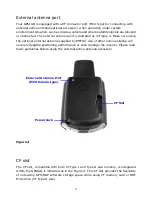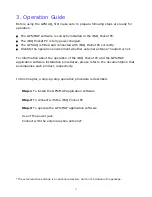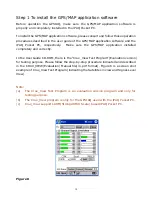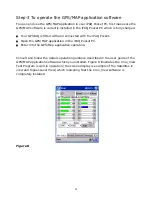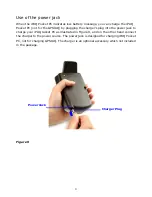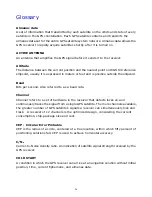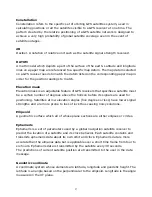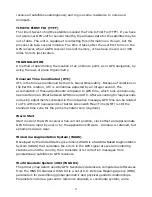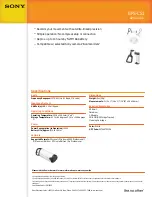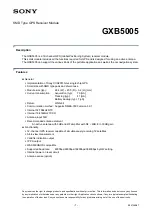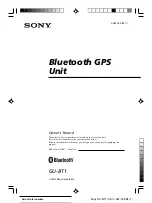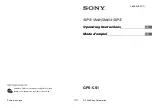
27
Constellation
Constellation refers to the specific set of orbiting GPS satellites system, used in
calculating positions or all the satellites visible to a GPS receiver at one time. The
pattern created by the relative positioning of a GPS satellite network is designed to
achieve a very high probability of global satellite coverage even in the event of
satellite outages.
dB
Decibel. A notation of relative unit such as the satellite signal strength received.
DATUM
A math model which depicts a part of the surface of the earth. Latitude and longitude
lines on a paper map are referenced to a specific map datum. The map datum selected
on a GPS receiver needs to match the datum listed on the corresponding paper map in
order for the position readings to match.
Elevation mask
Elevation mask is an adjustable feature of GPS receivers that specifies a satellite must
be a certain number of degrees above the horizon before its signals are used for
positioning. Satellites at low elevation angles (five degrees or less) have lower signal
strengths and are more prone to loss of lock thus causing noisy solutions.
Ellipsoid
A geometric surface which all of whose plane sections are either ellipses or circles.
Ephemeris
Ephemeris is a set of parameters used by a global navigation satellite receiver to
predict the location of a satellite and its clock behavior. Each satellite contains and
transmits ephemeris data about its own orbit and clock. Ephemeris data is more
accurate than the almanac data but is applicable over a short time frame from four to
six hours. Ephemeris data is transmitted by the satellite every 30 seconds.
The predictions of current satellite position are transmitted to the user in the data
message.
Geodetic coordinate
A coordinate system whose elements are latitude, longitude and geodetic height. The
latitude is an angle based on the perpendicular to the ellipsoid. Longitude is the angle
measured in the XY plane.



